#Ramiro I de León
Explore tagged Tumblr posts
Text
Capilla Mayor II (Catedral de Córdoba)
Foto 1. Capilla mayor (lado derecho completo). Catedral – Mezquita de Córdoba Ya vimos de esta Capilla Mayor su bóveda y el Altar Mayor, pero queda por examinar el resto de dicha Capilla, que es más que digna de ver. Comenzando por la foto 1, podemos ver la bóveda principal del crucero, que ya vimos y que se configura como un lucernario que ilumina toda la construcción,. Al final, los arcos de…

View On WordPress
#Batalla de Clavijo#Burgos#Catedral de Córdoba#Don Cristóbal de Rojas y Sandoval#En Español#España#Fray Diego de Mardones obispo de Córdoba#Hernán Ruiz el Viejo#Lerma#Manierismo#Ramiro I de León#Renacimiento#Santiago Matamoros#Siglo XVI#Catholic Cathedrals#Spain#renaissance art#renaissance#manierism#16th century
0 notes
Text
#el cid#polls#favourite characters#El Cid (2020)#rodrigo díaz de vivar#ruy#urraca de zamora#fernando i de león#sancha de león#doña jimena#jimena díaz#alfonso vi de león#garcía ii de galicia#sancho ii de castilla#elvira de toro#ramiro i de aragón#i realized this poll ended up being mainly about the leonese royal family but anyways#i will do other polls with some others characters later#i have included here ramiro i of aragon too because he was ferdinand i of leon's bastard brother#ramiro i and ferdinand i's father was sancho iii of pamplona and garcia iii of pamplona was their brother too#el cid polls
5 notes
·
View notes
Text
Interesting Papers for Week 7, 2023
Dynamics of Temporal Integration in the Lateral Geniculate Nucleus. Alexander, P. C., Alitto, H. J., Fisher, T. G., Rathbun, D. L., Weyand, T. G., & Usrey, W. M. (2022). eNeuro, 9(4).
Degenerate boundaries for multiple-alternative decisions. Baker, S.-A., Griffith, T., & Lepora, N. F. (2022). Nature Communications, 13, 5066.
Behaviorally relevant decision coding in primary somatosensory cortex neurons. Buetfering, C., Zhang, Z., Pitsiani, M., Smallridge, J., Boven, E., McElligott, S., & Häusser, M. (2022). Nature Neuroscience, 25(9), 1225–1236.
Attention rhythmically samples multi-feature objects in working memory. Chota, S., Leto, C., van Zantwijk, L., & Van der Stigchel, S. (2022). Scientific Reports, 12, 14703.
A neural correlate of perceptual segmentation in macaque middle temporal cortical area. Clark, A. M., & Bradley, D. C. (2022). Nature Communications, 13, 4967.
People adaptively use information to improve their internal states and external outcomes. Cogliati Dezza, I., Maher, C., & Sharot, T. (2022). Cognition, 228, 105224.
The dorsal hippocampus’ role in context-based timing in rodents. De Corte, B. J., Farley, S. J., Heslin, K. A., Parker, K. L., & Freeman, J. H. (2022). Neurobiology of Learning and Memory, 194, 107673.
Human perceptual and metacognitive decision-making rely on distinct brain networks. Di Luzio, P., Tarasi, L., Silvanto, J., Avenanti, A., & Romei, V. (2022). PLOS Biology, 20(8), e3001750.
Parallel processing, hierarchical transformations, and sensorimotor associations along the ‘where’ pathway. Doudlah, R., Chang, T.-Y., Thompson, L. W., Kim, B., Sunkara, A., & Rosenberg, A. (2022). eLife, 11, e78712.
Small, correlated changes in synaptic connectivity may facilitate rapid motor learning. Feulner, B., Perich, M. G., Chowdhury, R. H., Miller, L. E., Gallego, J. A., & Clopath, C. (2022). Nature Communications, 13, 5163.
Biased belief priors versus biased belief updating: Differential correlates of depression and anxiety. Gagne, C., Agai, S., Ramiro, C., Dayan, P., & Bishop, S. (2022). PLOS Computational Biology, 18(8), e1010176.
Dopamine Modulates Adaptive Forgetting in Medial Prefrontal Cortex. Gallo, F. T., Zanoni Saad, M. B., Silva, A., Morici, J. F., Miranda, M., Anderson, M. C., … Bekinschtein, P. (2022). Journal of Neuroscience, 42(34), 6620–6636.
Long-lasting, dissociable improvements in working memory and long-term memory in older adults with repetitive neuromodulation. Grover, S., Wen, W., Viswanathan, V., Gill, C. T., & Reinhart, R. M. G. (2022). Nature Neuroscience, 25(9), 1237–1246.
Superstitious learning of abstract order from random reinforcement. Jin, Y., Jensen, G., Gottlieb, J., & Ferrera, V. (2022). Proceedings of the National Academy of Sciences, 119(35), e2202789119.
The developmental changes in intrinsic and synaptic properties of prefrontal neurons enhance local network activity from the second to the third postnatal weeks in mice. Kalemaki, K., Velli, A., Christodoulou, O., Denaxa, M., Karagogeos, D., & Sidiropoulou, K. (2022). Cerebral Cortex, 32(17), 3633–3650.
A molecularly integrated amygdalo-fronto-striatal network coordinates flexible learning and memory. Li, D. C., Dighe, N. M., Barbee, B. R., Pitts, E. G., Kochoian, B., Blumenthal, S. A., … Gourley, S. L. (2022). Nature Neuroscience, 25(9), 1213–1224.
Learning Spatiotemporal Properties of Hippocampal Place Cells. Lian, Y., & Burkitt, A. N. (2022). eNeuro, 9(4).
Mutual interaction between visual homeostatic plasticity and sleep in adult humans. Menicucci, D., Lunghi, C., Zaccaro, A., Morrone, M. C., & Gemignani, A. (2022). eLife, 11, e70633.
Natural switches in behaviour rapidly modulate hippocampal coding. Sarel, A., Palgi, S., Blum, D., Aljadeff, J., Las, L., & Ulanovsky, N. (2022). Nature, 609(7925), 119–127.
Understanding the structure of cognitive noise. Zhu, J.-Q., León-Villagrá, P., Chater, N., & Sanborn, A. N. (2022). PLOS Computational Biology, 18(8), e1010312.
#science#Neuroscience#computational neuroscience#Brain science#research#cognition#cognitive science#neurons#neural networks#neural computation#neurobiology#psychophysics#scientific publications
16 notes
·
View notes
Text
Events 7.19 (before 1940)
AD 64 – The Great Fire of Rome causes widespread devastation and rages on for six days, destroying half of the city. 484 – Leontius, Roman usurper, is crowned Eastern emperor at Tarsus (modern Turkey). He is recognized in Antioch and makes it his capital. 711 – Umayyad conquest of Hispania: Battle of Guadalete: Umayyad forces under Tariq ibn Ziyad defeat the Visigoths led by King Roderic. 939 – Battle of Simancas: King Ramiro II of León defeats the Moorish army under Caliph Abd-al-Rahman III near the city of Simancas. 998 – Arab–Byzantine wars: Battle of Apamea: Fatimids defeat a Byzantine army near Apamea. 1333 – Wars of Scottish Independence: Battle of Halidon Hill: The English win a decisive victory over the Scots. 1544 – Italian War of 1542–46: The first Siege of Boulogne begins. 1545 – The Tudor warship Mary Rose sinks off Portsmouth; in 1982 the wreck is salvaged in one of the most complex and expensive projects in the history of maritime archaeology. 1553 – The attempt to install Lady Jane Grey as Queen of England collapses after only nine days. 1588 – Anglo-Spanish War: Battle of Gravelines: The Spanish Armada is sighted in the English Channel. 1701 – Representatives of the Iroquois Confederacy sign the Nanfan Treaty, ceding a large territory north of the Ohio River to England. 1702 – Great Northern War: A numerically superior Polish-Saxon army of Augustus II the Strong, operating from an advantageous defensive position, is defeated by a Swedish army half its size under the command of King Charles XII in the Battle of Klissow. 1817 – Unsuccessful in his attempt to conquer the Kingdom of Hawaiʻi for the Russian-American Company, Georg Anton Schäffer is forced to admit defeat and leave Kauaʻi. 1821 – Coronation of George IV of the United Kingdom. 1832 – The British Medical Association is founded as the Provincial Medical and Surgical Association by Sir Charles Hastings at a meeting in the Board Room of the Worcester Infirmary. 1843 – Brunel's steamship the SS Great Britain is launched, becoming the first ocean-going craft with an iron hull and screw propeller, becoming the largest vessel afloat in the world. 1845 – Great New York City Fire of 1845: The last great fire to affect Manhattan begins early in the morning and is subdued that afternoon. The fire kills four firefighters and 26 civilians and destroys 345 buildings. 1848 – Women's rights: A two-day Women's Rights Convention opens in Seneca Falls, New York. 1863 – American Civil War: Morgan's Raid: At Buffington Island in Ohio, Confederate General John Hunt Morgan's raid into the north is mostly thwarted when a large group of his men are captured while trying to escape across the Ohio River. 1864 – Taiping Rebellion: Third Battle of Nanking: The Qing dynasty finally defeats the Taiping Heavenly Kingdom. 1870 – Franco-Prussian War: France declares war on Prussia. 1900 – The first line of the Paris Métro opens for operation. 1903 – Maurice Garin wins the first Tour de France. 1916 – World War I: Battle of Fromelles: British and Australian troops attack German trenches as part of the Battle of the Somme. 1934 – The rigid airship USS Macon surprised the USS Houston near Clipperton Island with a mail delivery for President Franklin D. Roosevelt, demonstrating its potential for tracking ships at sea. 1936 – Spanish Civil War: The CNT and UGT call a general strike in Spain – mobilizing workers' militias against the Nationalist forces.
0 notes
Text
SANTIAGO, MATAMOROS

Seguimos en la Calle Santiago, Santiago el Mayor, el de Matamoros, grito de 8 siglos contra un invasor, es la calle mas importante de nuestra querida cuidad de Valladolid, España, que une la Plaza de Zorrilla con nuestra Plaza Mayor, los dos lugares mas importante de la cuidad unido por nuestra calle principal.
Santiago Matamoros fue el grito libertador contra el yugo Islámico.
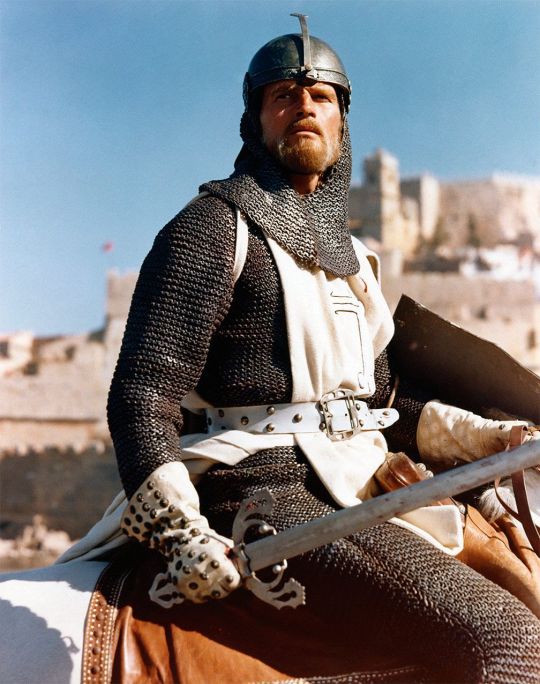
La pregunta que deberíamos hacernos es...
¿Es el Apostal Santiago el mismo Santiago Matamoros? La repuesta corta es SI y NO, una contradictoria paradoja que lleva siglos y tiene su explicación.
El Apostal Santiago, uno de los 12 originales apósteles seguidores de Jesús Cristo aterrizo en Galicia para evangelizar a España.
De Santo a Guerrero hay mucho trecho...
Santiago contra el islam, Asturias es España y el resto es tierra (re)conquistada...(Santiago el Mayor - Wikipedia)
En el siglo xii se redacta en Santiago de Compostela el llamado Privilegio de los Votos, que atribuye al rey Ramiro I una victoria frente a los moros en Clavijo en 844, victoria obtenida gracias a una aparición de Santiago.
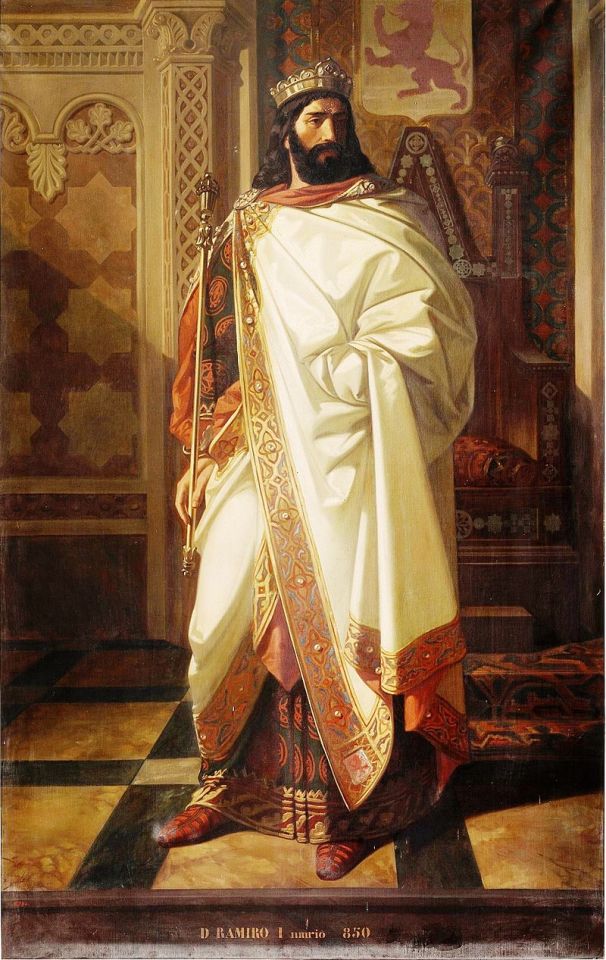
Ramiro I rey de Asturias (Cuadro pintado en 1852 por Isidoro Lozano (Isidoro Santos Lozano Sirgo) (Museum: Museo del Prado)
Agradecido, el rey habría hecho el voto de que todos los habitantes pagasen al Apóstol, o sea a su santuario, una cantidad anual. Según este mismo documento, la victoria en Clavijo puso fin a la entrega anual a los enemigos de un vergonzoso tributo de cien vírgenes cristianas. La primera representación de Santiago a caballo, de principios del siglo xiii en la catedral compostelana, muestra las doncellas arrodilladas ante el caballo de Santiago.

La Batalla de Clavijo - Colección - Museo Nacional del Prado (museodelprado.es)
El miles Christi medieval, imagen poco frecuente, se convierte a partir de la segunda mitad del siglo xv y a lo largo del siglo xvi en Santiago Matamoros, defensor del catolicismo frente a todos sus enemigos: los moros, los herejes y los paganos, cuyos cuerpos o cabezas ruedan entre las patas de su caballo.
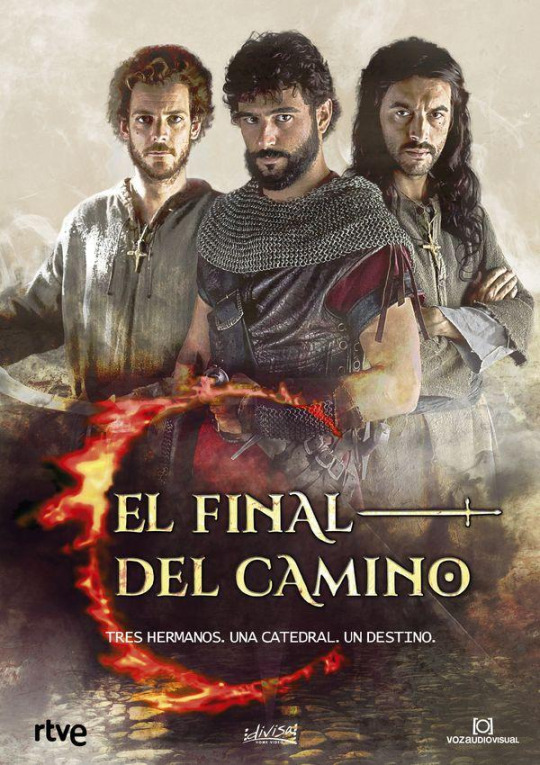
El final del camino (2017) es una serie de televisión dirigida por Miguel Alcantud, Óscar Pedraza y Miguel Conde.
Ambientada en la península ibérica en el siglo xi y comienzos del XII, la serie recrea la construcción de la Catedral de Santiago de Compostela a través de las vivencias de tres hermanos afincados en la ciudad gallega. Como trasfondo, personajes históricos intervienen también en la trama, como es el caso del rey Alfonso VI de León, su esposa Constanza de Borgoña, el obispo Diego Gelmírez, la reina Urraca de León o Raimundo de Borgoña, entre otros. (El final del camino - Wikipedia) IMDb 6'8 TIEMPO 1H 18M
858-1 https://ok.ru/video/1751745890904
Para continuar viendo los demás episodios, (en total son 8), pinche en el siguiente enlace: El final del camino - Serie o al fondo del blog ...
El Cid (1961)
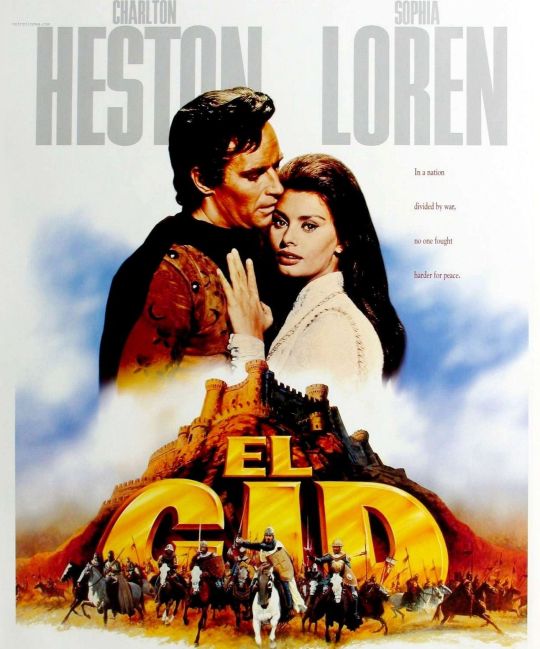
El Cid es una película épica ítalo-estadounidense de 1961 dirigida por Anthony Mann. El guion se atribuye a Fredric M. Frank, Philip Yordan y Ben Barzman, con contribuciones no acreditadas de Bernard Gordon .
Trata de la vida del guerrero castellano Rodrigo Díaz de Vivar, el Cid (del árabe as-sidi , que significa 'el señor'). (El Cid (película) - Wikipedia)
858-2 https://ok.ru/video/2437364714156

Romances del Cid (Joaquín Díaz)
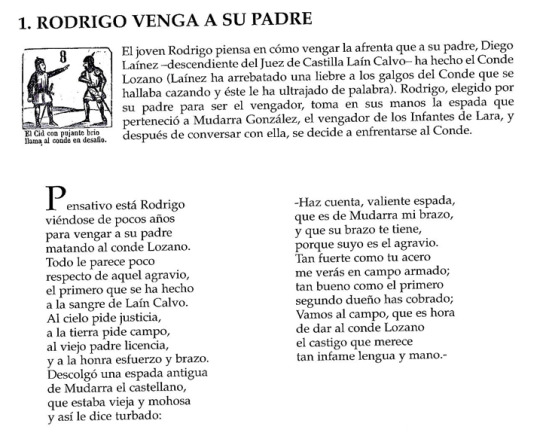
Pincha en el enlace (verde) a continuación para escuchar el disco completo de 15 partidas y el texto: Romances del Cid (Joaquín Díaz)
youtube
858-3 https://youtu.be/JbPw8UCzCcM

EPISODEO 2: ENLACE https://ok.ru/video/5655431219939
EPISDOEO 3: ENLACE https://ok.ru/video/4093056780925
EPISODIO 4: ENLACE https://ok.ru/video/5655430892259
EPISODIO 5: ENLACE https://ok.ru/video/5655430695651
EPISODIO 6: ENLACE https://ok.ru/video/5655431154403
EPISODIO 7: ENLACE https://ok.ru/video/5655430630115
EPISODIO 8: ENLACE https://ok.ru/video/4093055011453
0 notes
Text
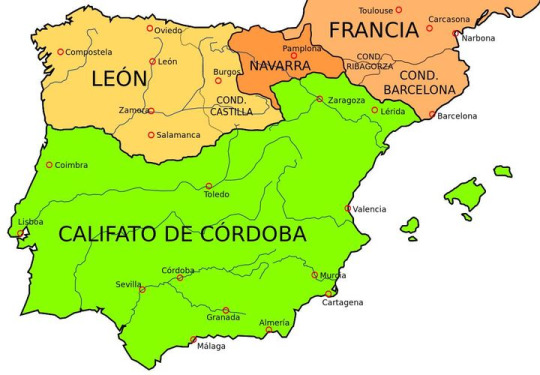
Descubre el origen del condado de Castilla.
La región del primitivo condado de Castilla era denominada como Bardulia antes del siglo IX debido a una tribu prerromana que habitó la zona.
En el siglo IX los asturianos habían comenzado a ganar tierras a los musulmanes. El rey Ordoño I sucedió a Alfonso II en el 850 y delegó a sus hermanos el cuidado de las fronteras del reino, a Gatón le dio Bierzo y a Rodrigo le creó el condado de Castilla, región que debió a su nombre a la gran cantidad de castillos que había en la zona.
De esta forma Rodrigo se convirtió en el primer conde de Castilla y era el responsable de recaudar impuestos y administrar justicia.
A partir del 853 Ordoño se entromete en la guerra civil que ocurría en el emirato de Córdoba y envía a sus hermanos a atacar. Rodrigo se apoderó de Haro, Grañón, entre otras plazas y fundó nuevas fortalezas.
Rodrigo repobló sus tierras con la ayuda de la aristocracia local. En el 860 Amaya fue repoblada.
Rodrigo apoyó a Alfonso III en su lucha por el trono contra Fruela cuando murió Ordoño I en el 866. La victoria de Alfonso aseguró a Rodrigo una gran influencia en la corte. Dos años después conquista Álava.
Rodrigo murió en el 873 y dejó a Castilla convertida en un territorio que se podía diferenciar de León y Álava. Le sucedió su hijo Diego Rodríguez y es el primer caso en el que el título de conde pasó de forma hereditaria, quizás en agradecimiento a la ayuda otorgada de Rodrigo a de Alfonso III.
Diego ayudó al rey en su enfrentamiento con los Bani Qasi, administró sus tierras y conquistó más territorios. Murió en el 885 y de esa fecha hasta el 931 el territorio quedó dividido en varios condados.
En el 929 Abderramán III se proclamó califa y el rey leonés Ramiro II decidió confiar la administración de los condados de la parte oriental del reino de León a Fernán González, conde de Lara.
Fernán tuvo un papel destacado en la batalla de Simancas en el 939, tras lo cual conquistó Sepúlveda, Riaza y Fresno. Con su poder afianzado, comenzó a actúar mas independiente y se casó con Sancha de Pamplona, hermana de García Sánchez I de Pamplona.
Fernán supo aprovechar las guerras civiles leonesas para afianzar su autoridad y fijar una independencia real, aunque no nominal, del condado de Castilla. Llevó a cabo una política exterior independiente y heredó sus tierras a su hijo García Fernández en el 970.
En 1029 el conde García Sánchez de 12 años fue asesinado y el condado pasó al rey pamplonés Sancho Garcés III en virtud de su matrimonio con Muniadona de Castilla, hermana del conde asesinado. De esta manera la casa de Lara dio paso a la dinastía Jimeno.
En 1029 Sancho Garcés III designó a su hijo Fernando como conde de Castilla y en 1037 se convirtió en rey de León por su matrimonio con Sancha de León con lo que el condado castellano quedó unido. En el año 1066 Fernando convirtió a Castilla en un reino y se lo dio en herencia a su hermano Sancho El Fuerte.
1 note
·
View note
Text
1054 - Batalla de Atapuerca
La batalla de Atapuerca fue un enfrentamiento acaecido el 25 de agosto de 1054 en un campo a las afueras de la homónima localidad burgalesa. Combatieron las tropas de Fernando I de León y conde de Castilla contra las de su hermano García III Sánchez de Pamplona y Nájera, apoyadas por las tropas de su hermano Ramiro y de los reinos taifas tributarios Fernando I venció la batalla y el rey pamplonés…

View On WordPress
0 notes
Text
ALFONSU III
King of Asturias
THE GREAT
(born c. 848/49 - died 910)

pictured above is an imagined portrait of the King of Asturias, by Eduardo Cano de la Peña from 1852
-------------------- ~ -------------------- ~ --------------------
SERIES - Descendants of the Kings of Asturias: Alfonsu was King of Asturias from 866.
-------------------- ~ -------------------- ~ --------------------
ALFONSU was born around 848-49, on an unknown location at the Kingdom of Asturias.
His parents were Infante Ordoñu of Asturias and his wife Nuña, and he was a member of a branch line of the ASTUR-LEONESE DYNASTY. His name was ALFONSU ORDÓÑEZ, meaning Alfonsu son of Ordoñu.
By 850 his grandfather Ramiru I, King of Asturias died and his father immediatly succeeded as King Ordoñu I. And probably on his father's accession he became an INFANTE OF ASTURIAS.
When his father died in 866 he succeded as ALFONSU III, KING OF ASTURIAS, but a certain Count Froila from Galicia tried to usurp his throne. He then fled to Álava and was only able to regain control over Asturias a few months later, after Count Froila was killed.
However unlike King Nepocianu, the other defeated usurper of the Asturian throne, Count Froila is not considered to have been King of Asturias.
He married a certain Ximena around 860-70, so it is not known if he was already King or not at the time of his wedding. They probably had eight children (check the list below), at least five sons and three daughters.
As some sources believe that his wife was a Navarrese Royal, one of the daughters of Gartzia I Enekoitz, King of Pamplona and his first wife Urraka, the marriage could have been arranged as an alliance between Asturias and the newly established Kingdom of Pamplona.
Early in his reign he conquered Oporto (currently in Portugal) and for two decades he fought the Emirate of Córdoba, over old and new Asturian terriories, until they finally made peace around 884.
In the early 900s his internal problems began as his family started to rebel. Some sources believe that in 909 his eldest son Infante García tried to took the power with the support of his mother and brothers around 909 but was defeated and imprisoned.
However theses sources also believe that his family forced him to abdicate in 910, before his death, and the Kingdom of Asturias was divided between his eldest sons. After which the capital of the Kingdom was changed from Oviedo to the city of León.
The King of Asturias died sometime in 910, in Zamora, when he was returning from a battle, probably against his sons. He was probably already in his sixties.
-------------------- ~ -------------------- ~ --------------------
Though, sources diverge on when his sons took the power and divided the Kingdom. Some believe he was forced to abdicate before his death and others believe that his sons only inherited the Kingdom after his death.
Each of his three eldest sons received:
Infante García - received León, Álava and Castille and became known as King of León;
Infante Ordoñu - received Galicia and became known as King of Galicia;
Infante Fruela - received the remainder of Asturias, around Oviedo, and became known as King of Asturias.
-------------------- ~ -------------------- ~ --------------------
Check my posts on ALFONSU III's family, his Royal House and his Kingdom!
ALFONSU III and his wife XIMENA may have had eight children...
García I, King of León - husband of Muniadona;
Ordoñu II, King of León - husband first (possibly) of an unknown woman, second of Elvira Méndez, third of Aragonta González and fourth of Antsa Santxitz of Pamplona;
Fruela II, King of Asturias - husband first to Nunilo Jimena and (possibly) second of an unknown Muslim woman;
Infante Ramiro of Asturias - possible husband of Urraca;
Infante Gonzalo of Asturias - probably unmarried;
possibly Sancha Alfónsez - nothing is known about her;
possibly an unnamed daughter - nothing is known about her; and
possibly another unnamed daughter - nothing is known about her.
He was a member of a branch line of the Astur-Leonese Dynasty.
And was the King of Asturias between 866-900.
#alfonsu iii#king of asturias#middle ages#medieval spain#medieval europe#astur leonese dynasty#royals#royalty#monarchy#monarchies#asturian royalty#spanish royals#royal history#asturian history#spanish history#iberian history#european history#world history#history#reconquista#9th century#10th century#history with laura
9 notes
·
View notes
Photo

King Ramiro III of León (961-985). By José María Rodríguez de Losada. He was the son of King Sancho I of León and Queen Teresa Ansúrez. He was succeeded by his cousin, Bermudo II of León.
#monarquia española#reyes de españa#reyes de leon#rey de leon#reconquista española#astur leonese dynasty#jose maria rodriguez de losada
3 notes
·
View notes
Photo

Fin y bibliografía
Termina el mes de octubre y, con él, "Monstruos ibéricos” llega a su fin. ¡Muchísimas gracias a todos los que lo habéis seguido, compartido y disfrutado! Estoy muy contento con la acogida que ha tenido este proyecto, tanto que me planteo continuar con él ilustrando a más monstruos y ogros que se han quedado en el tintero debido al espacio limitado a 31 entradas, de cara a publicar “Monstruos ibéricos” en formato de libro físico (ya sea autoeditado o con alguna editorial interesada). Sea como sea, iré informando de cualquier novedad al respecto por aquí y por mis redes sociales (las tenéis todas en este link)
Y, ahora sí, dejo a continuación la bibliografía utilizada para la elaboración de los textos. De nuevo, ¡mil gracias por estar ahí!
BIBLIOGRAFÍA
ALONSO, Pilar y GIL, Alberto (1994), Personajes imaginarios en peligro de extinción, Barcelona, Ed. Aura.
AMADES, Joan (1957), Los ogros infantiles, Revista de Dialectología y Tradiciones Populares, C.S.I.C, tomo XIII.
ARRIETA GALLASTEGUI, Miguel I. (1995), Gentes y seres mágicos de la mitología de Asturias, Gijón, Ed. Trea.
BORGES, Jorge Luis (1977), La Pesadilla en Siete noches, México D.F., Ed. Fondo de cultura económica.
CALLEJO CABO, Jesús y CANALES TORRES, Carlos (1994), Duendes. Guía de los seres mágicos de España, Madrid, Ed. EDAF.
CALLEJO CABO, Jesús y CANALES TORRES, Carlos (2018) Los duendes, Madrid, Ed. EDAF
CALLEJO CABO, Jesús (1995), Hadas. Guía de los seres mágicos de España, Madrid, Ed. EDAF.
CALLEJO CABO, Jesús (1998), Los dueños de los sueños. Ogros, cocos y otros seres oscuros, Barcelona, Ed. Martínez Roca.
CALLEJO CABO, Jesús (2019), El mundo encantado de Castilla y León, Zamora, Museo Etnográfico de Castilla y León.
ESLAVA GALÁN, Juan (1981), Leyendas de los castillos de Jaén, Jaén, Publicaciones de la Caja Rural Provincial de Jaén.
FERNÁNDEZ JUÁREZ, Gerardo y PEDROSA José Manuel (ed.) (2008), Antropologías del miedo: vampiros, sacamantecas, locos, enterrados vivos y otras pesadillas de la razón, Valencia, Ed. Calambur.
GALLO, Pablo (2020), Bestiario del Norte. Seres mitológicos y animales fantásticos de Galicia, Asturias, Cantabria y País Vasco, Madrid, Ed. La Felguera.
GARCÍA JIMÉNEZ, Salvador (2011), Vampirismo Ibérico. Bebedores de sangre, sacamantecas y curanderos, Santa Cruz de Tenerife, Ed. Melusina.
IZZI, Massimo (1989), Diccionario ilustrado de los monstruos, Palma de Mallorca, Ed. Alejandría.
MARTÍN SÁNCHEZ, Manuel (2002), Seres míticos y personajes fantásticos españoles, Madrid, Ed. Edaf.
WEBGRAFÍA
ÁLVAREZ, Rober (09 de septiembre, 2019), Este informe de la DGT que alerta de una «pandilla» que te echará de la carretera si les das las luces es falso, recuperado de https://www.newtral.es/pandilla-sangre-luces-coche/20190909/
CALLEJO CABO, Jesús (marzo de 2018), Los seres míticos de Castilla y León, I jornadas de creencias mágicas populares: mitos y supersticiones, congreso llevado a cabo en el Museo Etnográfico de Castilla y León, Zamora, recuperado de https://www.youtube.com/watch?v=DOfe9xTWTv4&ab_channel=MuseoEtnogr%C3%A1ficodeCastillayLe%C3%B3n
ESPINO, Israel J. (27 de febrero, 2012), De Aullones, Pantarujas, Mantarujas y Pamparamantas, recuperado de http://blogs.hoy.es/extremadurasecreta/2012/02/27/de-aullones-pantarujas-pamparullas-y-pamparamantas/
ESPINO, Israel J. (9 de mayo, 2012), Alunados: cuando la noche se vuelve malvada, recuperado de http://blogs.hoy.es/extremadurasecreta/2012/05/08/alunados-cuando-la-noche-se-vuelve-malvada/
ESPINO, Israel J. (07 de septiembre, 2013), Vampiros extremeños: El Barquero del Colmillo, recuperado de http://blogs.hoy.es/extremadurasecreta/2013/09/07/vampiros-extremenos-el-barquero-del-colmillo/
ESPINO, Israel J. (13 de noviembre, 2018), Los “asustaniños” extremeños, recuperado de http://blogs.hoy.es/extremadurasecreta/2018/11/13/los-asustaninos-extremenos/
GONZÁLEZ, Alejandro (coordinador) (23 de julio, 2005), Asustadores de la península ibérica, recuperado de https://web.archive.org/web/20100630110328/http://encina.pntic.mec.es/~agonza59/peninsulares.htm
LÓPEZ, Alfred (30 de enero, 2006), La leyenda urbana de ‘la banda sangre’ y los autos con las luces apagadas, recuperado de https://blogs.20minutos.es/yaestaellistoquetodolosabe/leyendas-urbanas-la-banda-sangre/
MARTÍNEZ BEIVIDE, Alberto (marzo de 2018), El trasmundo y otras historias en la tradición oral cántabra, I jornadas de creencias mágicas populares: mitos y supersticiones, congreso llevado a cabo en el Museo Etnográfico de Castilla y León, Zamora, recuperado de https://www.youtube.com/watch?v=lkbsx9Hzb0U&ab_channel=MuseoEtnogr%C3%A1ficodeCastillayLe%C3%B3n
OLIVA, Albert (16 de marzo, 2019), El Lladrefaves de Valls: una llegenda gegant, recuperado de https://tarragonadigital.com/alt-camp/geganto-lladrefaves-valls-picamoixons-llegenda-2019
SATTI BOUZAS, Juan Gabriel (04 de marzo, 2020), La maldición de Orcavella y el Vizconde de Fisterra, recuperado de https://www.adiantegalicia.es/reportaxes/2020/03/04/la-maldicion-de-orcavella-y-el-vizconde-de-fisterra.html
TAUSIET, María (febrero de 2020), Brujas en la cama. Deseos y terrores nocturnos, II jornadas de creencias mágicas populares: mitos y supersticiones, congreso llevado a cabo en el Museo Etnográfico de Castilla y León, Zamora, recuperado de https://www.youtube.com/watch?v=zX-nNwI-rPI&ab_channel=MuseoEtnogr%C3%A1ficodeCastillayLe%C3%B3n
ZAMBRANO, Juan Carlos (31 de marzo, 2016). ‘Los ramiros’, personajes demoníacos que atemorizaban a los niños en la fiesta de la Resurrección, recuperado de https://fuentedecantos.hoy.es/noticias/201603/29/ramiros-personajes-demoniacos-atemorizaban-20160329185435.html
39 notes
·
View notes
Text

On February 1st, 850, the King Ramiro I died. He inherited the crown from his relative Alphonse II the Chaste, who died without offspring. He had to face Vikings' attacks and tried to repopulate the city of León. During his reing, the famous and legendary battle of Clavijo took place.

During his reign, two famous buildings were constructed: the church of San Miguel de Lillo (above) and the Palace of St. Mary of Naranco (below).
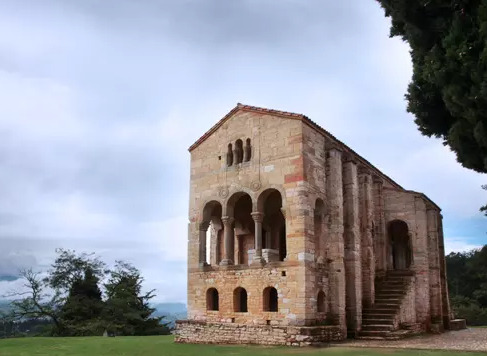
About the Vikings' attack (ES):
youtube
youtube
#Ramiro I de Asturias#Alfonso II el Casto de Asturias#Spain#History#Spanish History#Church of San Miguel de Lillo#Palace of St Mary of Naranco#Preromanesque#Middle Ages#Asturias#Youtube#La Coruña#Gijón#Clavijo#Apóstol Santiago#Leyendas#Pedro Marcio#Siglo IX#Voto de Santiago#Crónicas medievales#Ordoño I#Monte Laturce#Albelda#Ordoño II#Reconquista
1 note
·
View note
Text
Characters of the Banu Qasi triology (+ some familiy trees of the Banu Qasi, the emirs and khalifas of Cordoba, the Arista & Jimena dinasties and the Asturian/Leonese kings)
Banu Qasi-Arista Familiy trees from the books:
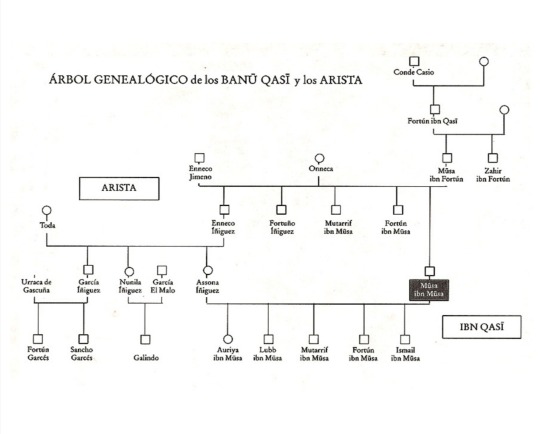
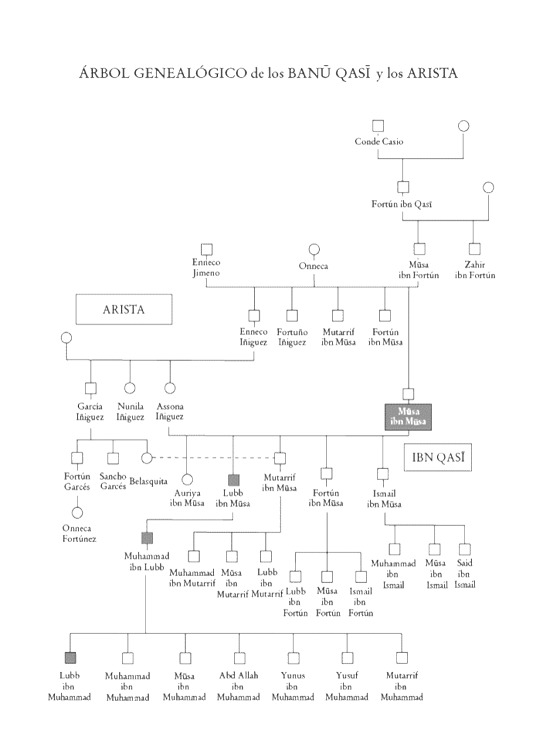
Arista-Jimena & Benu Qasi dinasties family trees I found on Internet:
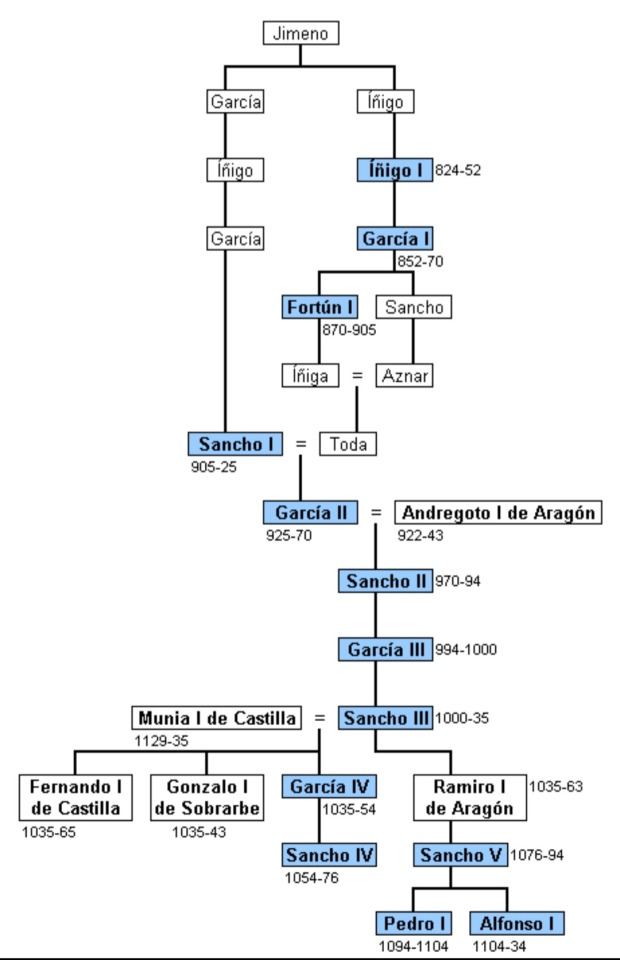
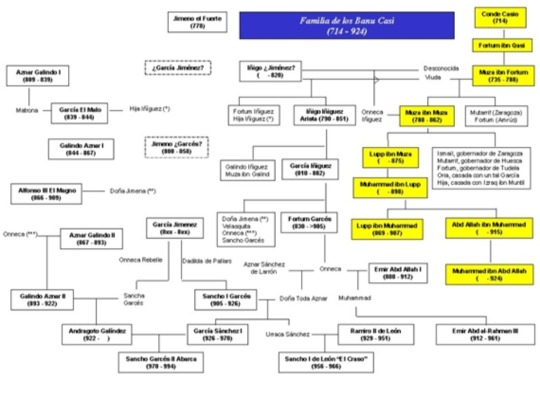

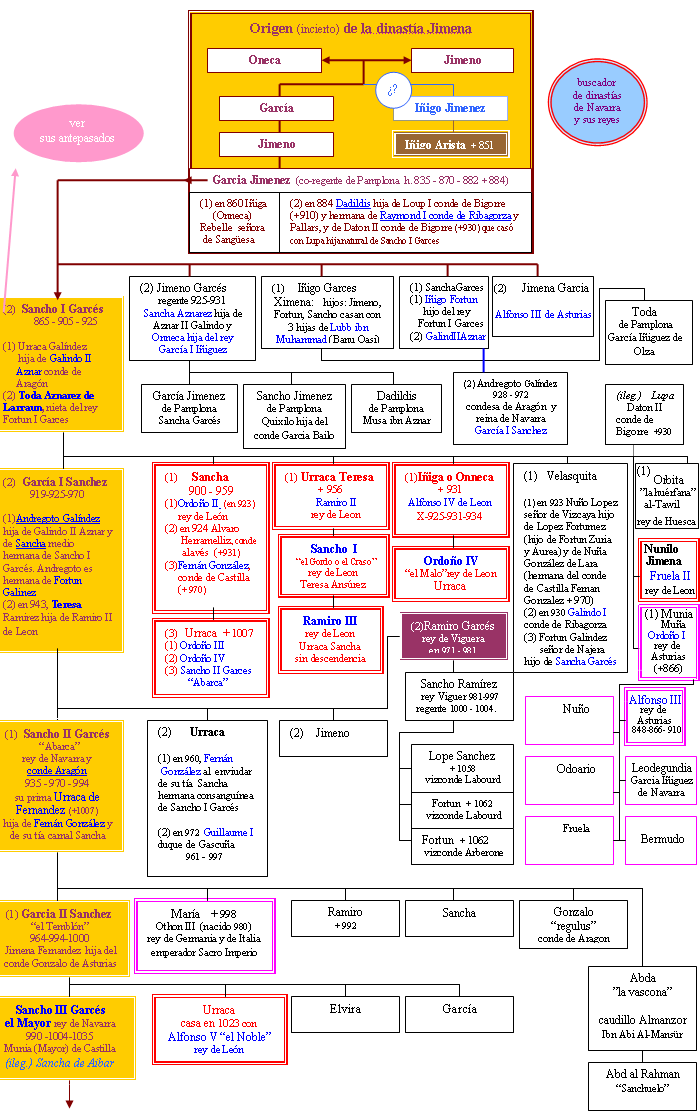

The Asturian-Leonese kings:
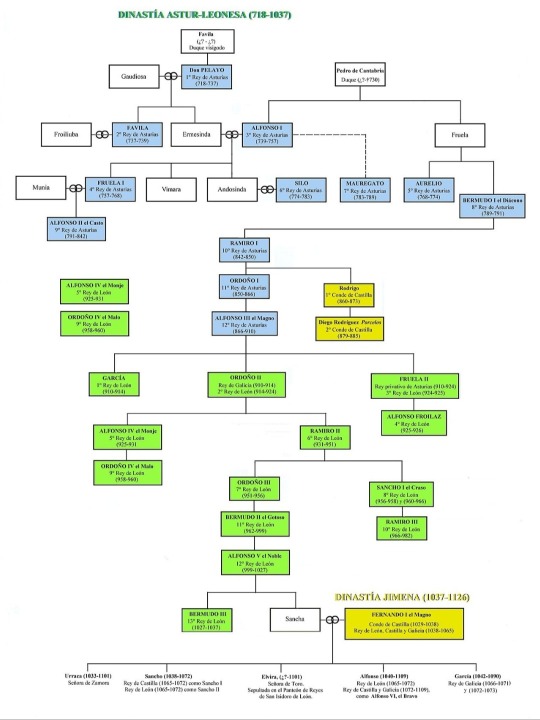
The Umayyad emirs and khalifas of Cordoba (the first ones are the Umayyads from Damascus, the Umayyads from Cordoba start with Abd al Rahman I):
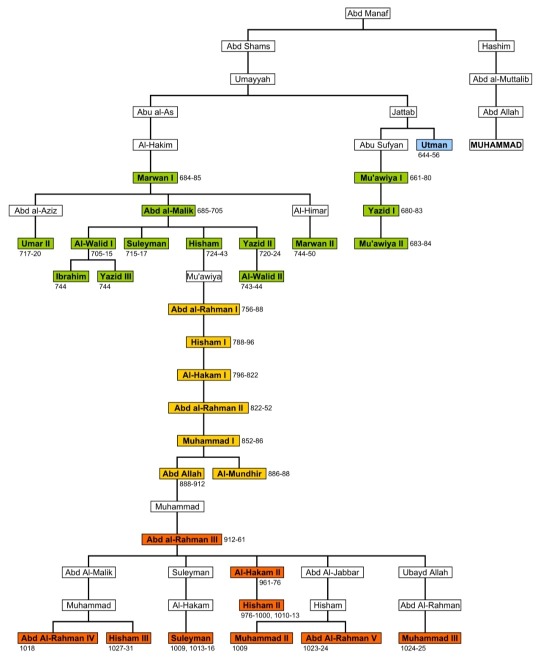
Abulfath Nasr: Eunuch who achieved great influence and power in the court of Abd al Rahman II.
Abd al Karim ibn Mugit: Hayib of Al Hakam I, a prestigious general and trusted man of the emir.
Abban ibn Abd Allah: Son of the emir Abd Allah
Abbas ibn Abd al Aziz: Cordovan General.
Abbas ibn Abd al Barr: Governor of Huesca
Abd al Aziz al Tuchibí: Patriarch of the Tuchibíes
Abd al Aziz: Male son of the emir Abd al Rahman III and his wife Maryam.
Abd al Malik: Eldest son of Al Tawil.
Abd al Rahman I: First Emir of Córdoba (756-788), granson of the khalifa Hisham of Damascus. He was the only survivor of the slaughter of the Umayyads of Damascus carried out by the Abbasids and their supporters. The Abbasids established their caliphate in Baghdad, and Abd al Rahman fled to Al Ándalus and established an independent emirate from Baghdad, the emirate of Cordoba.
Abd al Rahman ibn Marwan: Rebel of the heart of Merida
Abd al Rahman ibn Badr: Son of the hachib Badr ibn Ahmad.
Abd al Rahman ibn Ibrahim ibn Hayay: Son of Ibrahim ibn Hayay, little king of Ishbiliya.
Abd al Rahman ibn Umar: Son of Umar ibn Hafsun.
Abd al Rahman II: Fourth Emir of Córdoba (822-852).
Abd al Rahman III: Eighth emir of Córdoba, son of Muhammad ibn Abd Allah. He succeeded his grandfather after his father's death.
Abd Allah ibn Kulayb: General and Governor with Abd al Rahman II
Abd Allah ibn Yahya: Governor of Zaragoza with Muhammad I
Abd Allah ibn Muhammad: Seventh Emir of Córdoba (888-912), husband of Onneca and father of Muhammad.
Abd Allah ibn Muhammad: Second son of Muhammad ibn Lubb, leader of the Banū Qasī since 907.
Abd Allah ibn Hayay: Arab rebel from Seville
Abd Allah ibn Khalaf: Vali of Barbastro and father-in-law of Ismail ibn Musa
Abd Allah ibn Abd al Rahman: Brother of the emir Hisham I, who fought against him together with Sulayman, the eldest son.
Abd al Walid al Iskandaraní: General of the emir Abd al Rahman II.
Abú Marwám: Second son of the emir Abd al Rahman and Maryam.
Abdel: Fictional character. Slave of Fortún and Onneca in Córdoba
Abu Marwan: Alfaquí from Cordoba
Abu Nasr: Famous archer in the ranks of Ibn Hafsun.
Abu Umayya: One of the sons of the emir Abd Allah.
Abū Yazīd: Chief of the Zenetas tribe.
Adosinda: First wife of Ramiro de León.
Adur: Fictional character. Muzna's brother and thus Abd al Rahman III's uncle.
Adur ibn Badr: Fictional character. Assumed name of the second son of the hachib Badr ibn Ahmad.
Ahmed ibn Qasi: Fictional character. Zahir's relative who lives in Zaragoza.
Ahmad ar-Razi: Cordovan poet.
Ahmad ibn Abd Rabbih: Cordovan poet
Ahmad Al-Barra: Governor of Zaragoza and the Upper March
Ahmad ibn Baqi: Qadi of Qurtuba.
Ahmad ibn Maslama: Sevillian leader, opposed to Ibn Hayay.
Ahmad ibn Muhammad: Brother of the emir Abd Allah.
Ahmad ibn Muhammad ibn Hudayr: Vizier of Abd al Rahman III.
Al Anqar: Mujahid al Tuchibi, Governor of Saraqusta.
Aishun: Chieftain of Archidona
Afrah: fictional character. Concubine in the palace of the governor of Zaragoza
Al Abli: Muladi Poet from Granada
Al Anqar: The One Eyed. Tuchibi Governor of Zaragoza during the siege of the city. Muhammad ibn Abd Allah al Tuchibi (although in the novel he is known as Mujahid to avoid the constant repetition of the same name)
Al Asadí: Arabic poet from Granada
Aisha: Supposed daughter of Fortún, although some sources consider her the daughter of Musa
Al Hakam I: Third Emir of Córdoba (796-822).
Al Harraní: Famous Cordovan doctor in the court of Abd al Rahman II.
Al Mahdi: Ubayd Allah al Mahdi, first Fatimid caliph (909-934).
Al Mundhir: Sixth Emir of Córdoba (886-888).
Al Sarray: Muslim holy man opposed to the power of the emir
Al Tawil: Nickname of Muhammad ibn Abd al Malik, governor of Huesca.
Al Walid ibn Al Hakam: Brother of the emir Abd al Rahman II.
Alfonso Froilaz: Son of Fruela II of León.
Alfonso II: King of Asturias (791-842)
Alfonso III: King of Asturias (866-910). Known as Alfuns among Muslims.
Alfonso IV: Alfonso Ordóñez, King of León.
Almugirah ibn Al Hakam: Brother of the emir Abd al Rahman II.
Álvaro Herrameliz: Count of Álava.
Álvaro de Córdoba: Cordovan monk, friend and biographer of Eulogio de Córdoba.
Amrus ibn Kulayb: General of Abd al Rahman II, brother of Abd Allah ibn Kulayb
Amrus ibn Umar: Muladí who seized power in Huesca
Amrus ibn Yusuf: General of Huesca muladí origin, governor of Talavera, later of Toledo, and later of the Upper Marca. He fortified Tudela in 802, and for this reason he is considered the founder of the city.
Andregoto: Daughter of Galindo Aznar and Sancha Garcés.
Aragonta: Second wife of Ordoño II of León.
Argentea: Daughter of Sulayman ibn Umar.
Aslam ibn Abd al Aziz: First qadi of Abd al Rahman III.
Asbag ibn Isa: Cordovan strategist in the battle of Bulay
Assona Iñiguez: Daughter of Iñigo Arista and Wife of Musa ibn Musa
Auriya ibn Musa: Eldest daughter of Musa ibn Musa. The Arabic name corresponds to the Oria of the Christian chronicles.
Ajab: fictional character. Former slave of Córdoba, wife of Lubb ibn Musa
Ayyub ibn Umar: Firstborn of Umar ibn Hafsun.
Aznar Galindo: Aragonese count faced with the Basques and the Banu Qasi.
Aznar Fortúnez: Son of Fortún Garcés
Aznar Sánchez de Larraón: Son of Sancho Garcés, husband of Onneca Fortúnez, father of Toda Aznárez.
Azzam: Fictional character. Andalusian fisherman, supporter of Ibn Hafsun.
Badr: fictional character. Eunuch of the harem of Abd Allah, died in 891.
Bahlul ibn Marzuq: Huesca rebel faced with the Banu Salama who came to take control of Zaragoza in 799
Banu Anyalin: Family of Sevillian muladíes
Banu Sabariquh: Family of Sevillian muladíes
Bashir: fictional character. One of Umar ibn Hafsun's administrators.
Badr ibn Ahmad: Hachib and trusted man of the emirs Abd Allah and Abd al Rahman III.
Basilio: Bishop of Pamplona.
Bastán: Cordovan Governor of Úbeda, owner of a famous sword that will bear his name.
Belasco Fortúnez: Son of Fortún Garcés
Belasquita Sánchez: Daughter of Sancho Garcés I and Toda Aznárez.
Balask al Yalaski: Velasco el Gascón, a character from Pamplona who was a supporter of Carolingian rule, who will intervene in the life of the city for decades.
Charlemagne: King of the Franks (768-814) who went to Zaragoza in 778. On his return, after destroying Pamplona, the rear of his army was decimated in the battle of Roncesvalles. Creator of the Hispanic March, in the year 800 he had himself crowned emperor by Pope Leo III
Céntulo Aznárez: Son of Count Aznar Galindo
Columba: Wife of Sulayman ibn Umar, mother of Argentea.
Count Casio: Visigothic count who dominated the lands of the Ebro upon the arrival of the Muslims in 711. He adopted the faith of the conquerors and became the mawla of the caliph of Damascus, thus preserving his rights and the government of his lands. His descendants, the Banū Qasī, would maintain this power for generations.
Count Eblo: Count of Gascony, sent by Ludovico against Pamplona
Count Gastón: Brother of Ordoño I, general of the Christian army.
Dadildis de Pallars: Mother of Sancho Garcés I.
Diego de Salazar: Fictional character. Pamplona gentleman.
Diego Rodríguez: Count at the service of Alfonso III, one of the officers of his hosts.
Dulce: Cordovan martyr.
Dulcidio: Leonese cleric, ambassador in the Cordovan court.
Damian: Fictional character. Mozarabic collaborator from Huesca who helps Belasquita.
Elvira: First wife of Ordoño II.
Elvira: fictional character. One of Burbaster's hermit nuns.
Enneco Fortúnez: First son of Fortún Garcés.
Enneco Garcés: Regent of Pamplona until the death of Fortún Garcés in 905.
Enneco Iñiguez: known as Iñigo Arista, the first king of Pamplona, blood brother of Musa ibn Musa
Enneco Jimeno: Basque leader, Onneca's first husband, father of Enneco Arista and Fortuño
Eulogio de Córdoba: Religious from Córdoba, promoter of the Mozarabic response to the emir.
Eugenia: Cordovan martyr.
Eugenia: fictional character. One of Burbaster's hermit nuns.
Eulogio: Bishop of Córdoba.
Fatima al Qurayshiya: First wife of Emir Abd al Rahman III.
Fortún Garcés: Son of García Iñiguez. He remained a hostage in Córdoba between 860 and 880. He returned as King of Pamplona, although he abdicated before his death in 905. His successor was Sancho Garcés I.
Fortún ibn Musa: Fourth son of Musa ibn Musa.
Fortún ibn Qasi: Son of Count Casio, father of Musa and Zahir ibn Fortún.
Fortuño Iñiguez: Brother of Enneco Arista, son of Enneco Jimeno and Onneca.
Fortuño: Fictional character. Abbot of the Monastery of Leyre.
Fray Aurelio: Fictional character. Burbaster Monk.
Galindo: Bishop of Pamplona.
Galindo Aznar: Count of Aragon.
Galindo Belascotenes: Father of García the Bad, lord of Cerretania until his removal from power by Aznar Galindo.
Galindo Aznárez: Son of Count Aznar Galindo
Galindo Garcés: Son of García the Bad and Nunila Galindo
Iñiguez: Fictional character. Alleged adoptive brother of García Iñiguez
Garcia I: First King of Leon.
García the Bad: Aragonese leader, faced with Aznar Galindo, who married Nunila, Enneco's daughter. Also known as Garcia from Sirtaniya.
García Garcés: Basque knight, husband of Auriya and son-in-law of Musa.
García Iñiguez: King of Pamplona (852-882)
García Sánchez: Son of Sancho Garcés I and Toda Aznárez.
García Ximenez: One of the Basque seniors, related to the Arista. He married several of his sons and daughters to sons and grandsons of the King of Pamplona. Father of Sancho Garcés I.
Garsiya: Fictional character. Basque businessman settled in Huesca.
Goto Núñez: Wife of King Sancho de León.
Guifrid/Wifredo the Hairy: First count of Barcelona.
Habiba: fictional character. Concubine in the palace of the governor of Zaragoza.
Habil: fictional character. Confidence man of Umar ibn Hafsun, in charge of finances.
Haddad: fictional character. One of Umar ibn Hafsun's administrators.
Hafsun: Father of Umar ibn Hafsun
Hafs ibn Umar: Son of Umar ibn Hafsun.
Hafs al Mur: Lieutenant of Umar ibn Hafsun
Hakim: Fictional character. Representative of the muladíes
Hana: fictional character. Wife of Abd Allah ibn Muhammad.
Hakam ibn Atinah: Governor of Toledo
Harith ibn Hamdum: Lord of Al Hamma
Harith ibn Bazi: General of the emir Abd al Rahman and governor of Zaragoza
Hāsim al Tuchibí: Son of Al Anqar.
Haxim ibn Al Aziz: General and hachib of the emir Muhammad I.
Hazine: fictional character. Concubine of Muhammad ibn Abd Allah Hermenegildo: Bishop of Compostela.
Hermogio: Bishop of Zamora, captured in the battle of Muez.
Hisam I: Second Emir of Córdoba (789-796).
Ibn Abd Rabbihi: Cordovan poet.
Ibn Abí Abda: Prestigious general, commander of the Cordovan army.
Ibn al-Wárit: Cordovan general. Ibn Basil: Cordovan general.
Ibn Bizant: Christian Governor of Úbeda.
Ibn Firnás: Andalusian poet of Maghrebi origins and scientist in the court of Abd al Rahman II. Among other, things he is considered the father of Aviation, Abbas Ibn Firnas created the first glider, and he achieve to soar over the city of Córdoba during brief flights in 9th century
Ibn Galib: Muladí officer under the orders of the emir Abd Allah
Ibn Mastana: Lieutenant of Umar ibn Hafsun.
Ibn Nabíl: Captain of Ibn Hafsún. Ibn Rudmir: Fictional character. They are of Rudmir, one of Burbaster's Christian captains.
Ibn Tumlús: Cordovan general.
Ibn Zennun: Toledo rebel
Ibrahim: Fictional character. Master builder of Muhammad ibn Lubb in Zaragoza
Ibrahim ibn Hayay: Arab Governor of Ishbiliya.
Idris I: Descendant of Muhammad, founder of the Idrisí caliphate with its capital in Fez.
Isa ibn Ahmad: Vizier of Abd al Rahman III.
Ishaq: fictional character. Ibn Hafsun's lieutenant.
Ismail ibn Badr: Cordovan poet.
Ismail ibn Fortún: Eldest son of Fortún ibn Musa
Ismail ibn Mūsa: Younger son of Mūsa ibn Mūsa.
Izraq ibn Mantil: Governor of Guadalajara, husband of Aisha.
Jawhar: fictional character. Muhammad ibn Lubb's officer in Saraqusta
Jazar ibn Mu'min: Senior officer of the Cordovan army confronted with Musa
Khaled: Fictional character. Head of the souk in Zaragoza.
Kurayb ibn Khaldún: Arab rebel from Seville.
Leodegundia: Daughter of Ordoño I of Asturias, second wife of García Iñiguez, King of Pamplona.
Lope=Lubb, its arabized form, lubb comes from latin lup, meaning wolf
Lubb ibn Fortun: Son of Fortun ibn Musa
Lubb ibn Muhammad: Son of Muhammad ibn Lubb, leader of the Banū Qasī since the year 898. Also known by the family name of Lubb ibn Qasī.
Lubb ibn Mutarrif: Son of Mutarrif ibn Musa
Lubb ibn Musa: Second son of Musa ibn Musa
Ludovico Pio: Son of Charlemagne. Emperor and King of the Franks from 814 to 840
Ludriq: Asturian knight that Fortún ibn Musa faced in his first campaign. It corresponds to the name of Rodrigo.
Maqsim: Bishop of Burbaster.
Maryam: Concubine and later wife of Emir Abd al Rahman III.
Maslama: Captain of Ibn Hafsun
Masud ibn Amrus: Son of Amrus ibn Umar, governor of Huesca like him
Matrona: Daughter of Aznar Galindo, first wife of García el Malo
Matruh ibn Sulayman: Chief of the Yemenis of Saragossa, evicted from power and died in 791
Mikhail: fictional character. Muhammad ibn Lubb's trusted official.
Moisés de Rada: Fictional character. Mozarabic doctor from Zaragoza.
Mudahir: Uncle of Umar ibn Hafsun
Muhagir ibn Alqatil: Leader of the Toledo rebels.
Muhammad I: Fifth Emir of Córdoba (852-886).
Muhammad ibn Abd Allah : First-born son of the emir Abd Allah and Onneca Fortúnez.
Muhammad ibn Ibrahim ibn Hayay: Son of Ibrahim ibn Hayay, little king of Ishbiliya.
Muhammad ibn Ismail: Son of Ismail ibn Mūsa, cousin of Lubb ibn Muhammad.
Muhammad ibn Lubb: Eldest son of Lubb ibn Mūsa, leader of the Banū Qasī until 898.
Muhammad ibn Lubb: Son of Lubb ibn Muhammad, leader of the Banū Qasī since 915.
Muhammad ibn Mutarrif: Son of Mutarrif ibn Musa
Muhammad ibn Rustum: Fictional character. General of the emir Abd al Rahman Mukhtar. Sahib al Suq of Tudela
Mutarrif ibn Salma: First qādi of Córdoba in the time of Abd Allah
Munia Sánchez: Daughter of Sancho Garcés I and Toda Aznárez.
Mūsa ibn Abd Allah: Supposed last leader of the Banū Qasī, second son of Abd Allah ibn Muhammad.
Musa Ibn Fortún: Father of Musa ibn Musa and brother of Nashir. Died in Zaragoza in 788 before the birth of his son Musa
Musa ibn Fortún: Son of Fortún ibn Musa, from Tudela.
Musa ibn Ismail: Son of Ismail ibn Musa
Musa ibn Galind: Governor of Huesca
Mūsa ibn Muhammad ibn Hudayr: Vizier of Abd al Rahman III.
Mūsa ibn Muhammad ibn Sa'id: Hachib of Abd al Rahman III.
Mūsa ibn Mūsa: Muladī, chief chieftain of the Banū Qasī (788-862). He came to be considered "the third king of Spain" by Christian chronicles. Enneco Arista's blood brother.
Musa Ibn Mutarrif: Son of Mutarrif ibn Musa
Mūsa ibn Nusayr (640, Saudi Arabia –716/718, Damascus or Hijaz) Yemeni conqueror of the Iberian Peninsula during the rule of khalifa Walid I of Damascus in 711 along with Tariq ibn Ziyad. He was governor of Ifriqiya (Tunisia) between 704 and 712 and first governor of Al Ándalus (712-714). His son, Abd al-Aziz ibn Musa ibn Nusair (685, Egypt or Iraq-716, Seville) was the second governor of Al Ándalus (714-716), he married Egilona (the widow of Rodrigo, the last Visigothic king), and their daughter, Aïcha or Asima bint Abd al-Aziz, married Fortún ibn Qasi (before 740– Zaragoza, 788), and their sons were Musa and Nashir ibn Fortún
Mutarrif ibn Musa: Third son of Musa ibn Musa, married to Belasquita of Pamplona
Mutarrif ibn Abd Allah: Second son of the emir Abd Allah, murderer of his brother Muhammad, the eldest son.
Mutarrif ibn Di-l-Nun: Berber leader of the Santaver district.
Mutarrif ibn Muhammad: Third son of Muhammad ibn Lubb, governor of Toledo since 898.
Muzna: Mother of Abd al-Rahman III, Basque.
Nayat: fictional character. Midwife of the emir's harem.
Nicholas: fictional character. Burbaster boy.
Nora: fictional character. Assumed name of the wife of the hachib Badr ibn Ahmad
Onneca: Mother of Mutarrif, Fortún and Musa ibn Musa, first married to Enneco Jiméno, with whom he had his first two children: Iñigo Iñiguez (Iñigo Arista) and Fortún Iñiguez.
Onneca Fortúnez: Daughter of King Fortún Garcés, captive with him in Córdoba for 20 years. There she married Prince Abd Allah, later emir, to be the mother of their firstborn, and grandmother of Abd al Rahman III, the first caliph of Córdoba.
Onneca Sánchez: Second daughter of Sancho Garcés I and Toda Aznárez
Onneca Rebelle: First wife of García Ximenez de Pamplona
Órbita Sánchez: Younger daughter of Sancho Garcés I and Toda Aznárez
Ordoño I: King of Asturias (850-866)
Ordoño II: King of León at the beginning of the 10th century. Urdūn for the Arabs.
Rashida: Fictional character, mother of Mutarrif ibn Abd Allah, wife of Prince Abd Allah
Recafredo: Metropolitan Bishop of Córdoba in the time of Muhammad I
Pedro: First abbot of the monastery of Albeda
Pelayo: young Christian martyr from Córdoba
Perfecto: Christian priest of Córdoba.
Qalam: Slave, singer and versatile woman of Basque origin transferred to Medina and from there to the court of Abd al Rahman II.
Raissa: fictional character. Wife of Mutarrif ibn Muhammad
Rabbi ben Teodulfo: Qumis from Córdoba of Christian origin who came to control the finances of the emirate during the reign of Al Hakam I
Ramiro I: King of Asturias (842-850)
Ramiro: Third son of Ordoño II of León
Ramón de Pallars: Count of Pallars
Rudmir: Captain of Ibn Hafsun
Sabrit: Muladí from Huesca related to Amrus ibn Yusuf, origin of the Banu Sabrit family
Sa'id ibn Al Mundhir: Governor of Guadalajara
Sa'id ibn Al Hudayl: Rebel faithful to Ibn Hafsun
Sa'id ibn Al Nabil: Cordovan Army Officer
Sa'id ibn Al Ya'la: Cordovan Army Officer
Sa'id ibn Amrú al Akri: Cordovan poet
Sa'dun: High-ranking official in the court of Abd al Rahman II, substitute for eunuch Nasr
Sa'dun al Ru'ayní: Zado. Governor of Barcelona until the conquest by the Franks in 801
Sadun al-Surumbaqi: Lieutenant of Ibn Marwan
Sahra: fictional character. Wife of Muhammad ibn Lubb, mother of Lubb ibn Muhammad.
Said: fictional character. Supporter of Amrus ibn Umar in Huesca
Said ibn Ismail: Son of Ismail ibn Musa
Said al Husayn: Protagonist of the rebellion against the emir in Zaragoza in 788
Salvador: Fictional character. Herbalist brother from a monastery in Albeda.
Samuel: Christian name of Sulayman ibn Umar
Sancha Aznárez: Daughter of Onneca Fortúnez and Aznar Sánchez
Sancha Sánchez: eldest daughter of Sancho Garcés I and Toda Aznárez
Sancha Garcés: Daughter of García Ximenez, wife of Enneco Fortúnez
Sancho Aznárez: Son of Onneca Fortúnez and Aznar Sánchez
Sancho: fictional character. Abbot of Leyre
Sancho Aznárez: husband of Toda Aznárez, king of Pamplona since 905
Sancho Ordóñez: Eldest son of Ordoño II of León
Sancho Garcés: Second son of García Iñiguez, regent during the captivity of his brother Fortún in Córdoba.
Sarband: Servando, son of the Christian count of Córdoba of the same name
Sawar ibn Hamdum: Arab rebel from Granada.
Sayida: Daughter of Al Tawil, wife of Lubb ibn Muhammad
Sebastian: Fictional character. Supposed name of the monk who helped Musa after the battle of Clavijo
Servando: Christian Count of Córdoba
Shamena: supposed first wife of Lubb ibn Muhammad
Sulayman ibn Umar: Son of Umar ibn Hafsun
Sulaaf ibn Hazim: Fictional character. Military chief of the Tudela garrison
Sulayman ibn Abd al Rahman: Eldest son of the first emir who fought for the succession against his brother Hisham I
Talal: fictional character. Christian boy imprisoned in an aceifa and turned into a eunuch of the fortress
Tariq ibn Ziyad: Maghrebi conqueror of the Iberian Peninsula in 711, lieutenant of Musa ibn Nusayr.
Tarub: Wife of Abd al Rahman, mother of his son Abd Allah
Temam ibn Alqama: Chancellor of the Al Mundhir government
Toda: Wife of Iñigo Arista, mother of García, Assona and Nunila Iñiguez.
Toda Aznárez: Daughter of Onneca Fortúnez and Wife of Sancho Garcés I
Ubayd Allah: Son of Abd al Rahman III and his wife Maryam
Ubayd Allah ibn Muhammad: Vanguard General at the Battle of Bulay
Ubayd Allah: General from Córdoba, protagonist of a large number of wars against the Christian lands of the north
Umar ibn Ayyub: Grandson of Umar ibn Hafsun
Umar ibn Hafsun: Malaga rebel who managed to put the emirate of Qurtuba to the test
Umaya ibn Abd Al Gafir: Governor of Seville envoy of the emir Abd Allah
Urdūn: Arabic name for Ordoño
Urraca Sánchez: Third daughter of Sancho Garcés I and Toda Aznárez
Urraca of Gascony: First wife of García Iñiguez, mother of Fortún Garcés
Vela Jiménez: Count at the service of Alfonso III
Walid ibn Ganim: General of Emir Muhammad I
Wanyat: Governor of Arnedo, deposed by Lubb ibn Musa
Wadinás: Captain of Ibn Hafsún
Willesindo: Bishop of Pamplona
Wuhayb (father): Governor of Zaragoza
Wuhayb (son): Governor of Tudela
Ximena: Pamplona princess, married to Alfonso III of Asturias, mother of Ordoño II.
Ximeno: Bishop of Pamplona in the time of Fortun Garcés
Ximeno Garcés: Brother of Sancho Garcés I and husband of Sancha Aznárez
Ximena Belasco: Daughter of Belasco Fortúnez, married to a son of García Ximenez.
Ya'far ibn Umar: Son of Umar ibn Hafsun
Yahya: boy who helps Musa after the battle of Albelda
Yahya ibn Idris: Yahya IV, Emir of Idris
Yahya ibn Ishaq: Jewish court physician of Cordoba
Ya'ad ibn Abd al Gafir: Governor of Ilvira (Granada), sent to Seville by Abd Allah
Yahya ibn Abd Al Aziz: Prosecutor in the trial against Muhammad
Ya'qūb ibn Abí: Officer of the Cordovan army
Yasar: fictional character. One of Umar ibn Hafsun's administrators
Yaziz: fictional character. Mercenary in the service of Ismail ibn Musa
Yunus ibn Muhammad: Son of Muhammad ibn Lubb, and brother of Lubb ibn Muhammad
Yusuf ibn Muhammad: Son of Muhammad ibn Lubb, and brother of Lubb ibn Muhammad
Zakariyya: Fictional character. Supposed childhood name of the character who will be known as Badr ibn Ahmad
Zakariyya ibn Amrus: Member of the Banu Amrus of Huesca
Ziryab: Musician, writer and multifaceted member of the Cordovan court, coming from the Baghdad court
Ziyad ibn Hud: Fictional character. Musa ibn Musa's childhood friend
Etymology II Locations
0 notes
Text
Events 7.19
AD 64 – The Great Fire of Rome causes widespread devastation and rages on for six days, destroying half of the city. 484 – Leontius, Roman usurper, is crowned Eastern emperor at Tarsus (modern Turkey). He is recognized in Antioch and makes it his capital. 711 – Umayyad conquest of Hispania: Battle of Guadalete: Umayyad forces under Tariq ibn Ziyad defeat the Visigoths led by King Roderic. 939 – Battle of Simancas: King Ramiro II of León defeats the Moorish army under Caliph Abd-al-Rahman III near the city of Simancas. 998 – Arab–Byzantine wars: Battle of Apamea: Fatimids defeat a Byzantine army near Apamea. 1333 – Wars of Scottish Independence: Battle of Halidon Hill: The English win a decisive victory over the Scots. 1544 – Italian War of 1542–46: The first Siege of Boulogne begins. 1545 – The Tudor warship Mary Rose sinks off Portsmouth; in 1982 the wreck is salvaged in one of the most complex and expensive projects in the history of maritime archaeology. 1553 – The attempt to install Lady Jane Grey as Queen of England collapses after only nine days. 1588 – Anglo-Spanish War: Battle of Gravelines: The Spanish Armada is sighted in the English Channel. 1701 – Representatives of the Iroquois Confederacy sign the Nanfan Treaty, ceding a large territory north of the Ohio River to England. 1702 – Great Northern War: A numerically superior Polish-Saxon army of Augustus II the Strong, operating from an advantageous defensive position, is defeated by a Swedish army half its size under the command of King Charles XII in the Battle of Klissow. 1817 – Unsuccessful in his attempt to conquer the Kingdom of Hawaii for the Russian-American Company, Georg Anton Schäffer is forced to admit defeat and leave Kauai. 1821 – Coronation of George IV of the United Kingdom. 1832 – The British Medical Association is founded as the Provincial Medical and Surgical Association by Sir Charles Hastings at a meeting in the Board Room of the Worcester Infirmary. 1843 – Brunel's steamship the SS Great Britain is launched, becoming the first ocean-going craft with an iron hull and screw propeller, becoming the largest vessel afloat in the world. 1845 – Great New York City Fire of 1845: The last great fire to affect Manhattan begins early in the morning and is subdued that afternoon. The fire kills four firefighters and 26 civilians and destroys 345 buildings. 1848 – Women's rights: A two-day Women's Rights Convention opens in Seneca Falls, New York. 1863 – American Civil War: Morgan's Raid: At Buffington Island in Ohio, Confederate General John Hunt Morgan's raid into the north is mostly thwarted when a large group of his men are captured while trying to escape across the Ohio River. 1864 – Taiping Rebellion: Third Battle of Nanking: The Qing dynasty finally defeats the Taiping Heavenly Kingdom. 1870 – Franco-Prussian War: France declares war on Prussia. 1900 – The first line of the Paris Métro opens for operation. 1903 – Maurice Garin wins the first Tour de France. 1916 – World War I: Battle of Fromelles: British and Australian troops attack German trenches as part of the Battle of the Somme. 1936 – Spanish Civil War: The CNT and UGT call a general strike in Spain – mobilizing workers' militias against the Nationalist forces. 1940 – World War II: Battle of Cape Spada: The Royal Navy and the Regia Marina clash; the Italian light cruiser Bartolomeo Colleoni sinks, with 121 casualties. 1940 – Field Marshal Ceremony: First occasion in World War II that Adolf Hitler appoints field marshals due to military achievements. 1940 – World War II: Army order 112 forms the Intelligence Corps of the British Army. 1942 – World War II: The Second Happy Time of Hitler's submarines comes to an end, as the increasingly effective American convoy system compels them to return to the central Atlantic. 1943 – World War II: Rome is heavily bombed by more than 500 Allied aircraft, inflicting thousands of casualties. 1947 – Prime Minister of the shadow Burmese government, Bogyoke Aung San and eight others are assassinated. 1947 – Korean politician Lyuh Woon-hyung is assassinated. 1952 – Opening of the Summer Olympics in Helsinki, Finland. 1957 – The largely autobiographical novel The Ordeal of Gilbert Pinfold by Evelyn Waugh was published. 1961 – Tunisia imposes a blockade on the French naval base at Bizerte; the French would capture the entire town four days later. 1963 – Joe Walker flies a North American X-15 to a record altitude of 106,010 meters (347,800 feet) on X-15 Flight 90. Exceeding an altitude of 100 km, this flight qualifies as a human spaceflight under international convention. 1964 – Vietnam War: At a rally in Saigon, South Vietnamese Prime Minister Nguyễn Khánh calls for expanding the war into North Vietnam. 1967 – Piedmont Airlines Flight 22, a Piedmont Airlines Boeing 727-22 and a twin-engine Cessna 310 collided on July 19, 1967, over Hendersonville, North Carolina, USA. Both aircraft were destroyed and all passengers and crew were killed, including John T. McNaughton, an advisor to Robert McNamara. 1969 – Chappaquiddick incident: U.S. Senator Ted Kennedy crashes his car into a tidal pond at Chappaquiddick Island, Massachusetts, killing his passenger Mary Jo Kopechne. 1972 – Dhofar Rebellion: British SAS units help the Omani government against Popular Front for the Liberation of Oman rebels in the Battle of Mirbat. 1976 – Sagarmatha National Park in Nepal is created. 1977 – The world's first Global Positioning System (GPS) signal was transmitted from Navigation Technology Satellite 2 (NTS-2) and received at Rockwell Collins in Cedar Rapids, Iowa, at 12:41 a.m. Eastern time (ET). 1979 – The Sandinista rebels overthrow the government of the Somoza family in Nicaragua. 1979 – The oil tanker SS Atlantic Empress collides with another oil tanker, causing the largest ever ship-borne oil spill. 1980 – Opening of the Summer Olympics in Moscow. 1981 – In a private meeting with U.S. President Ronald Reagan, French President François Mitterrand reveals the existence of the Farewell Dossier, a collection of documents showing the Soviet Union had been stealing American technological research and development. 1982 – In one of the first militant attacks by Hezbollah, David S. Dodge, president of the American University of Beirut, is kidnapped. 1983 – The first three-dimensional reconstruction of a human head in a CT is published. 1985 – The Val di Stava dam collapses killing 268 people in Val di Stava, Italy. 1989 – United Airlines Flight 232 crashes in Sioux City, Iowa killing 111. 1992 – A car bomb kills Judge Paolo Borsellino and five members of his escort. 1997 – The Troubles: The Provisional Irish Republican Army resumes a ceasefire to end their 25-year paramilitary campaign to end British rule in Northern Ireland. 2012 – Syrian civil war: The People's Protection Units (YPG) capture the city of Kobanî without resistance, starting the Rojava conflict in Northeast Syria. 2014 – Gunmen in Egypt's western desert province of New Valley Governorate attack a military checkpoint, killing at least 21 soldiers. Egypt reportedly declares a state of emergency on its border with Sudan.
0 notes
Photo
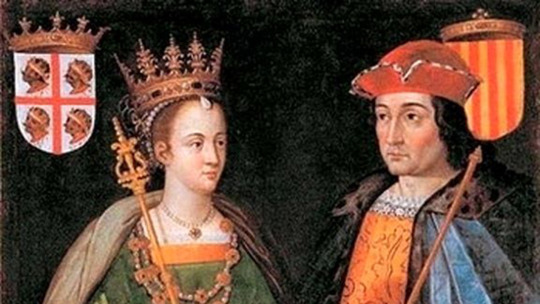
OCT 19 - UN DIA COMO HOY – (1469) – EN EL PALACIO DE LOS VIVERO, EN VALLADOLID (ESPAÑA), SE CASAN ISABEL I DE CASTILLA Y FERNANDO DE ARAGÓN, PRELUDIO DE LA UNIFICACIÓN DE LAS CORONAS DE CASTILLA Y ARAGÓN.
El palacio de los Vivero (cuyo nombre completo es palacio de D. Alfonso Pérez de Vivero o del vizconde de Altamira) se encuentra en Valladolid en la calle de Ramón y Cajal a la calle de la Chancillería. Comprende un conjunto de tres edificios unidos: Palacio o Chancillería, archivo de la Chancillería y cárcel de la Chancillería.
Estos dos fueron edificados independientemente pegados al palacio propiamente dicho. El inmueble goza de una gran carga histórica pues en él firmaron su compromiso matrimonial los Reyes Católicos el 18 de octubre de 1469; la ceremonia nupcial se celebró al día siguiente, el 19
A principios del siglo xvi la Corona de Castilla estableció en este palacio la sede de la Real Audiencia y Chancillería de Valladolid y, junto a ella (años más tarde), se construyó la Cárcel Vieja de Valladolid. Hasta 1969 fue sede de la Audiencia Territorial de Valladolid. Actualmente, alberga el Archivo Histórico Provincial de Valladolid. El edificio está protegido por la Declaración genérica del Decreto de 22 de abril de 1949, y la Ley 16/1985 sobre el Patrimonio Histórico Español.
Valladolid es un municipio y una ciudad española situada en el cuadrante noroeste de la península ibérica, capital de la provincia de Valladolid y sede de las Cortes y la Junta de la comunidad autónoma de Castilla y León.3 Cuenta, según los datos del INE de 2018, con 298 866 habitantes, siendo el 13.er municipio más poblado de España y el primero de todo el noroeste español.
Por su parte, el área metropolitana de la ciudad, conformada por 23 municipios, es la 20. de España, con una población de 414 281 habitantes (INE 2013). Tiene un área de influencia socio-económica directa de más de 600 000 personas, distando solamente 39 km de Palencia y otros municipios importantes.
Aunque existen indicios de asentamientos pertenecientes al Paleolítico inferior, y yacimientos vacceos y tardorromanos, Valladolid no tuvo una población estable hasta la repoblación de la cuenca del Duero, cuando Alfonso VI entregó a su valido Pedro Ansúrez su señorío, en 1072.
Durante la Edad Media fue sede de la corte de Castilla siendo dotada de ferias y Fuero Real y de distintas instituciones como Iglesia Colegial (elevada a rango de Catedral en 1595), Universidad, Real Audiencia y Chancillería o Casa de la Moneda.
Isabel I de Castilla (Madrigal de las Altas Torres, 22 de abril de 1451-Medina del Campo, 26 de noviembre de 1504) fue reina de Castilla desde 1474 hasta 1504, reina consorte de Sicilia desde 1469 y de Aragón desde 1479, por su matrimonio con Fernando de Aragón. También ejerció como señora de Vizcaya.
Se la conoce también como Isabel la Católica, título que le fue otorgado a ella y a su marido por el papa Alejandro VI mediante la bula Si convenit, el 19 de diciembre de 1496. Es por lo que se conoce a la pareja real con el nombre de Reyes Católicos, título que usarían en adelante prácticamente todos los reyes de España.
Se casó el 19 de octubre de 1469 con el príncipe Fernando de Aragón. Por el hecho de ser primos segundos necesitaban una bula papal de dispensa que solo consiguieron de Sixto IV a través de su enviado el cardenal Rodrigo Borgia en 1472.
Ella y su esposo Fernando conquistaron el Reino nazarí de Granada y participaron en una red de alianzas matrimoniales que hicieron que su nieto, Carlos, heredase las coronas de Castilla y de Aragón, así como otros territorios europeos, y se convirtiese en emperador del Sacro Imperio Romano.
Fernando II de Aragón, llamado «el Católico» (Sos, 10 de marzo de 1452-Madrigalejo, 23 de enero de 1516), fue rey de Aragón (1479-1516), de Castilla (como Fernando V, 1474-1504), de Sicilia (como Fernando II, 1468-1516), de Nápoles (como Fernando III, 1504-1516), de Cerdeña (como Fernando II, 1479-1516) y de Navarra (como Fernando I, 1512-1515). Fue además regente de la Corona castellana entre 1507 y 1516, debido a la inhabilitación de su hija Juana I, tras la muerte de Felipe el Hermoso.
El Reino de Castilla fue uno de los reinos medievales de la península ibérica. Castilla surgió como entidad política autónoma en el siglo ix bajo la forma de condado vasallo de León, alcanzando la categoría de «reino» en el siglo xi. Su nombre se debió a la gran cantidad de castillos que se encontraban en la zona.
El Reino de Aragón fue un estado hispánico nacido en 1035 por la unión de los condados de Aragón, Sobrarbe y Ribagorza en la figura de Ramiro I. Se expandió hacia el sur y fue la base de la posterior Corona de Aragón. Por la unión de los Reyes Católicos se unió a la Corona de Castilla en el siglo XV, formando la Monarquía Española.
En 1707, en el contexto de la guerra de Sucesión española, el rey Felipe V derogó sus fueros, abolió el Consejo de Aragón y eliminó la figura del virrey. Poco después desaparecerían el resto de instituciones propias, como el Justicia, la Diputación o las Cortes de Aragón y se aplicarían las Leyes de Castilla en lugar de las aragonesas. Estas medidas supusieron el fin de Aragón como reino autónomo, si bien continuaría considerándose una división territorial de España hasta 1833, cuando Javier de Burgos estableció la división territorial por provincias, suprimiendo la división por reinos. [email protected]
0 notes
Text
La Biblia de Oña (943) de Florencio de Valeránica
La Biblia de Oña (943) de Florencio de Valeránica
La Biblia de Oña fue compuesta por orden del abad Silvano en el scriptorium de San Pedro de Valeránica (Tordómar, Burgos) finalizándose el 10 de junio del 943, siendo Ramiro II rey de León y Fernán González conde de Castilla. Su autor fue el insigne Florencio de Valeránica. Fols. I v y II r de la Biblia de Oña Aunque fue una Biblia completa, desgraciadamente hoy en día solo se conservan 13…

View On WordPress
0 notes
Text
ALFONSO IV
King of León
THE MONK
(born c. 891/94 - died c. 933)
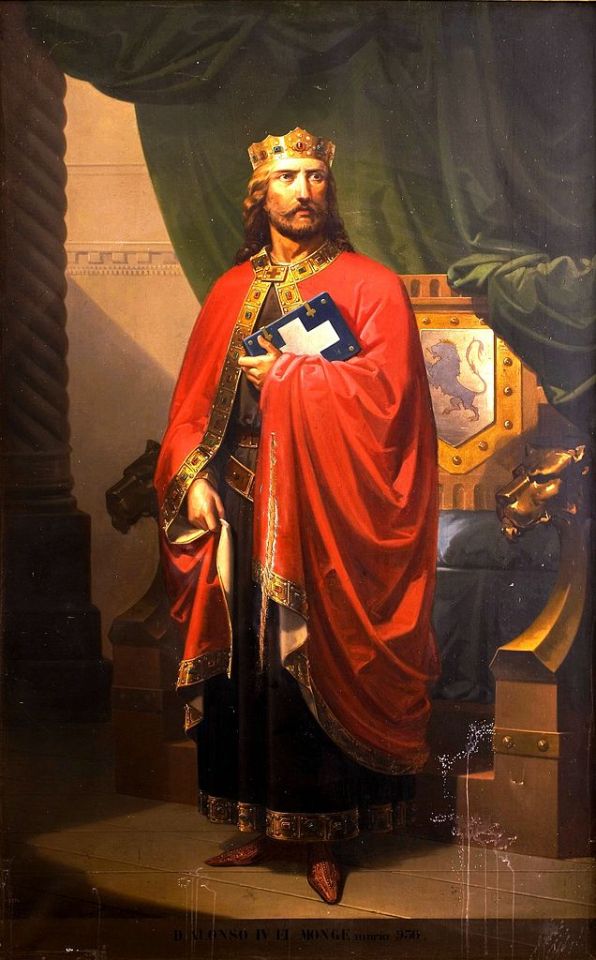
pictured above is an imagined portrait of the King of Asturias, by Eduardo Cano de la Peña from c. 1851
-------------------- ~ -------------------- ~ --------------------
SERIES - Descendants of the Kings of Asturias: Alfonso was a grandson of Alfonsu III, King of Asturias from 866. Some sources consider his father Ordoñu II, King of León to also have been King of Asturias from 914, though he was based in León.
-------------------- ~ -------------------- ~ --------------------
ALFONSU's birth is estimated to have occurred around 891-94, at the Kingdom of Asturias. He was the second son of Infante Ordoñu of Asturias and either an early unrecorded wife of his father or Elvira Méndez, the first recorded wife of his father.
Like his older brother Sancho Ordóñez he was not mentioned in some charts as son of Elvira, so some sources believe that she was not his mother.
He was probably born during the reign of his grandfather Alfonsu III, King of Asturias and thus he was born a member a branch line of the ASTUR-LEONESE DYNASTY. He was named ALFONSU ORDÓÑEZ, meaning Alfonsu son of Ordoñu.
In 910 his father became King of Galicia following his grandfather's abdication or death. And on this occasion his father founded another branch line of the Astur-Leonese Dynasty, the Ordóñez Dynasty, of which he became a member.
By 914 his uncle García I, King of León died and his father succeeded him as Ordoñu II, King of León. Though, as some sources believe that his uncle was King of Asturias, his father may have also succeeded as such. So on his father's accession he became an INFANTE OF LEÓN and possibly an INFANTE OF ASTURIAS.
Possibly as part of an alliance between his father and the King of Pamplona, in 923 he was married to ONEKA. Her name was Oneka Santxitz, because she was one of the daughthers of Antso I, King of Pamplona and Tota Aznaritz. They had at least two children (check the list below). And probably around that same time his father also married to one of her sisters, Antsa Santxitz.
When his father died in 924 neither him or his brothers inherited anything. Instead his uncle reunited the territories of León, Galicia and the remainder of Asturias under one ruler, himself as Fruela II, King of Asturias. Though his uncle's reign only lasted for over a year, until he died in 925.
So he and his brothers began fighting their cousins, the sons of the late King, over the Astur-Leonese succession. His brothers gathered Galician support while he as a son-in-law of the King of Pamplona got the support of the Navarrese.
By early 926 him and his brothers had already won the war, divided the Astur-Leonese territories between themselves and expelled their cousins the Froilaz brothers to eastern Asturias.
His older brother became Sancho, King of Galicia, while his younger brother Infante Ramiro received the government of the County of Portugal, and he became ALFONSO IV, KING OF LEÓN.
As the Kingdom of León was the most powerful realm, both of his brothers were subjected to him. And around 929, when her brother King Sancho died, Galicia was merged to León under his rulership.
Though, when his wife died around 931 he was devastated and decided to abdicate. As his only eldest son was still a child, the succession of the Astur-Leonese Kingdoms fell to his brother, who became Ramiro II, King of León.
After his abdication he took the vows as a monk at the Monastery of San Benito, in Sahagún. But a couple of months later he regreted his decision and tried to win his throne back.
And with the support of his cousins the Froilaz brothers he tried to remove his brother from the throne. But they were all captured, blinded and imprisoned for life.
The former King of Asturias died around 933, probably imprisoned at the Monastery of Saint Julian and Saint Basilissa, in Ruiforco de Torío at the Kingdom of León. He was probably around his late thirties or early fourties.
-------------------- ~ -------------------- ~ --------------------
Little is known of the fate of his children after his death. However it is known that in the 950s his eldest son got to briefly rule as Ordoño IV, King of León.
-------------------- ~ -------------------- ~ --------------------
Check my posts on ALFONSO IV's family, his Royal House and his connections to the Kings of Asturias!
ALFONSU IV and his wife ONEKA had two recorded children...
Ordoño IV, King of León - husband first of Urraca Fernández and second (possibly) of an unknown woman; and
Fruela Ordóñez - probably unmarried.
He was born a member of a branch line of the Astur-Leonese Dynasty and became a member of another line, the Ordóñez Dynasty.
In a span of three generations, ALFONSO IV was related to the Kings of Asturias through his father…
His father was Ordoñu II, King of León - possibly the King of Asturias between 914-24.
His grandfather was Alfonsu III, King of Asturias - the King of Asturias between 866-910.
#alfonso iv#king of león#kingdom of asturias#middle ages#medieval spain#medieval europe#astur leonese dynasty#royals#royalty#monarchy#monarchies#asturian royalty#spanish royals#royal history#asturian history#spanish history#iberian history#european history#world history#history#reconquista#9th century#10th century#history with laura
2 notes
·
View notes